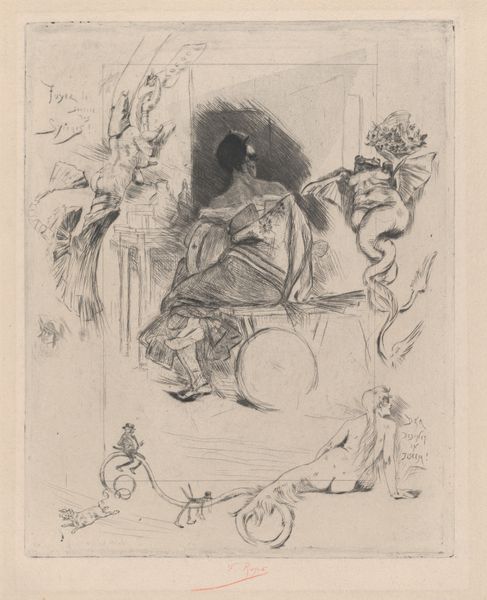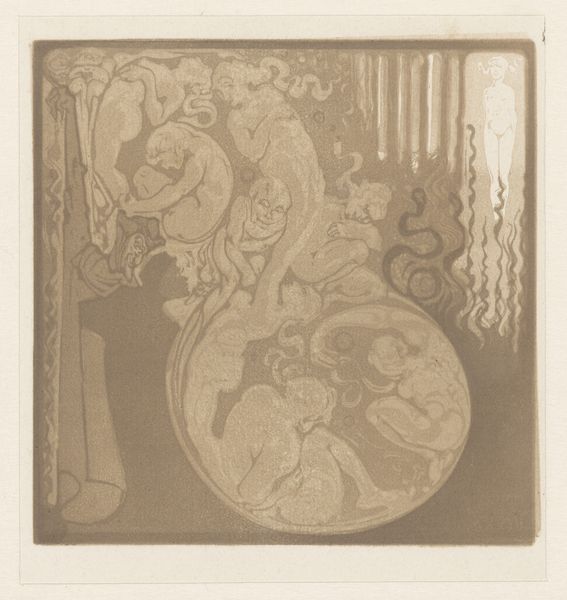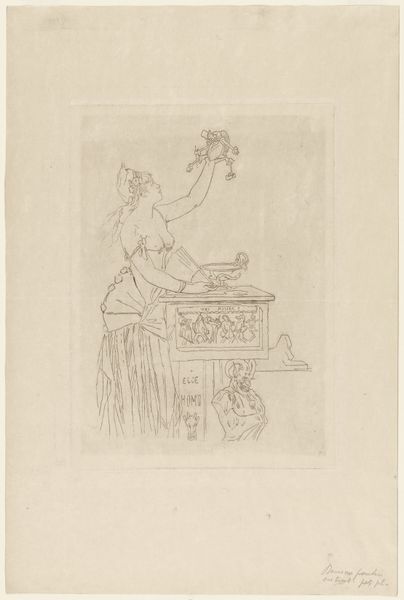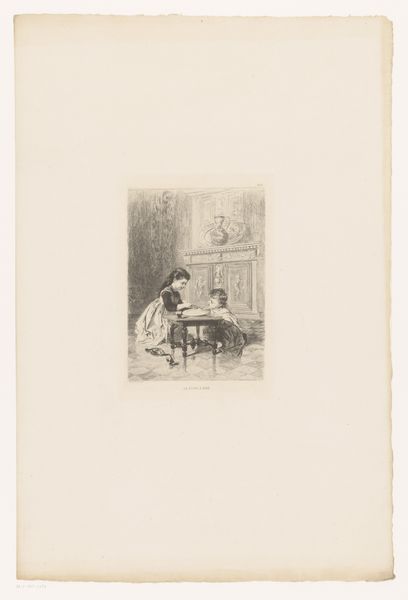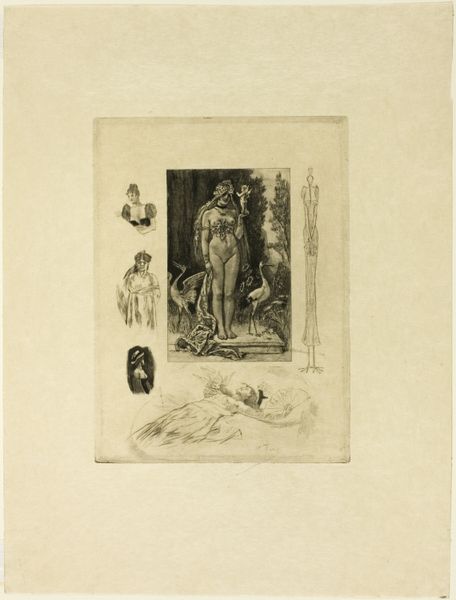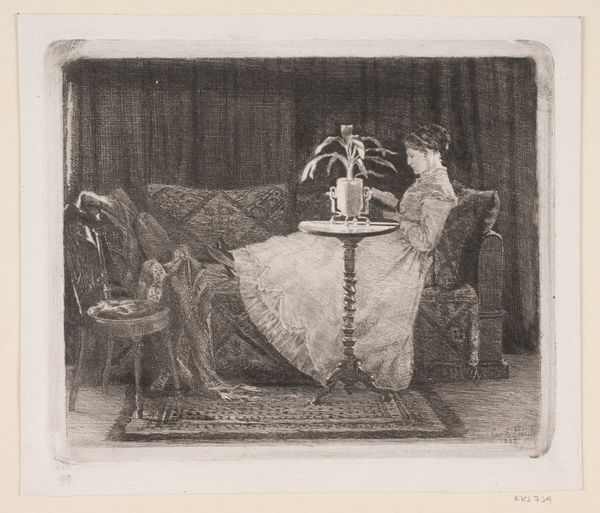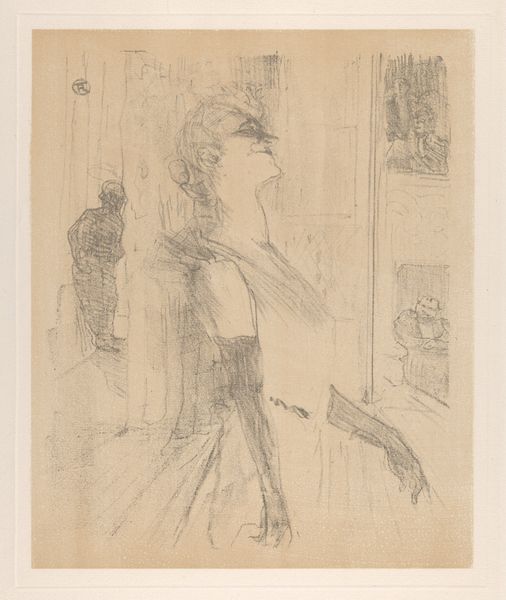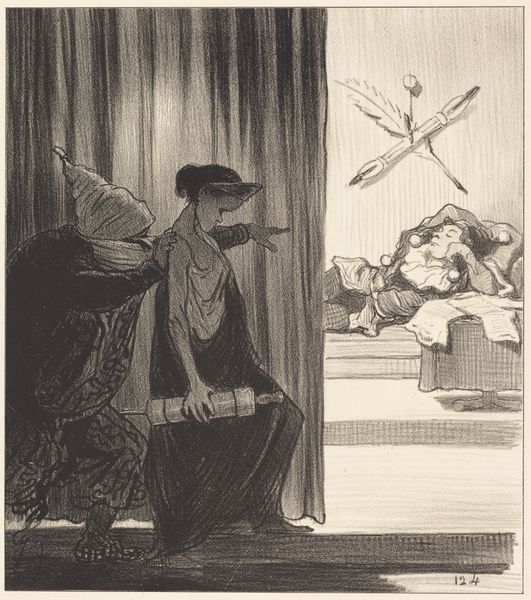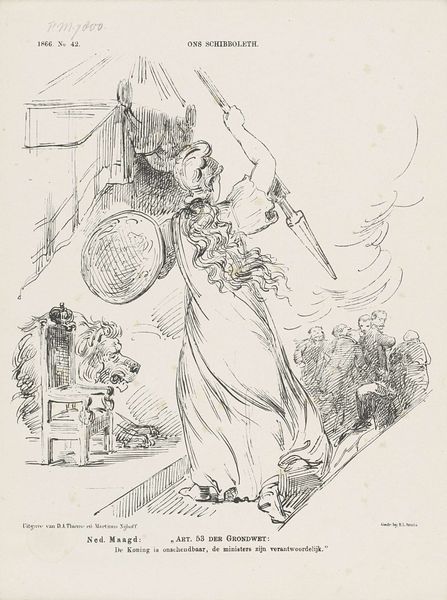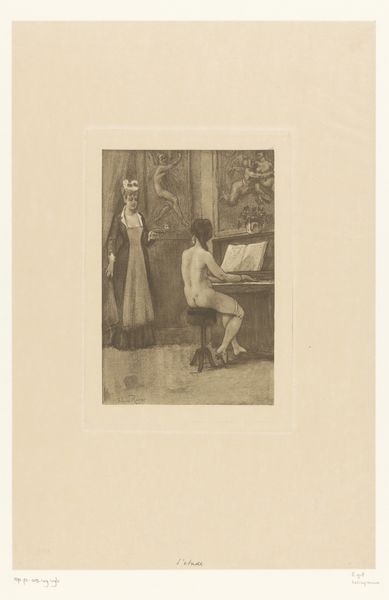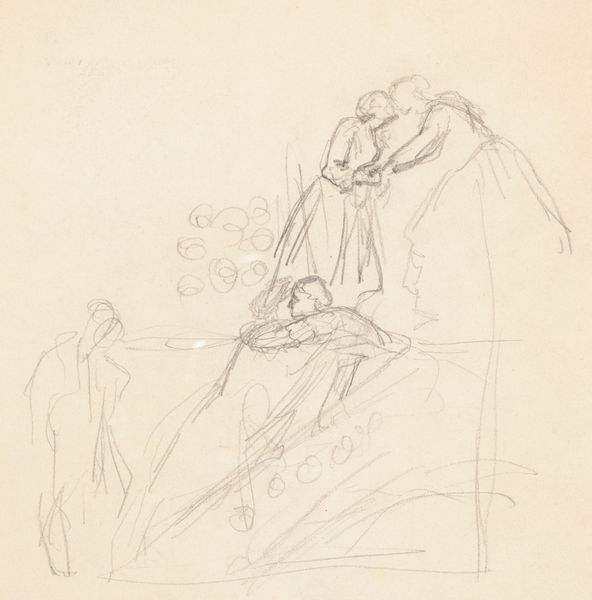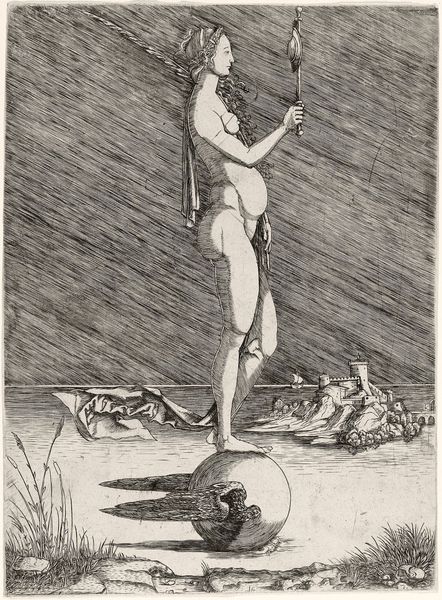
En mand med et laterna magica viser et billede af handelens og håndværkets forfald - den halte Mercur, den sovende Vulcan etc. 1743 - 1809
Dimensions: 150 mm (height) x 148 mm (width) (bladmaal)
Editor: This is Nicolai Abildgaard's "A Man Showing a Picture of the Decline of Trade and Crafts with a Magic Lantern," dating between 1743 and 1809. It's done with ink, watercolor, and drawing on paper. I'm struck by how critical it feels. What's your interpretation? Curator: Well, this drawing encapsulates a pivotal moment in the late 18th century when traditional social structures were being challenged. Abildgaard uses allegory to critique what he perceived as the decline of trade and crafts, connecting it to a broader commentary on societal shifts. How do you read the inclusion of classical figures like Mercury and Vulcan in this context? Editor: It feels like he's lamenting a lost golden age. Mercury, the god of commerce, is lame, and Vulcan, the god of the forge, is asleep, implying a stagnation or even decay of those sectors. Is he specifically criticizing the rise of industrialization, perhaps? Curator: That's an insightful observation. Abildgaard, as an intellectual and artist deeply embedded in the Enlightenment discourse, was likely engaging with anxieties surrounding early capitalism. Consider how the magic lantern itself acts as a metaphor. What could it symbolize in this context? Editor: Perhaps it represents the illusions or distorted realities being presented to the public during this period of rapid change? Like a false promise of progress? Curator: Precisely! The image projected by the lantern—this supposed "decline"—is presented as truth, but it's mediated, constructed. He invites us to question the narratives we're being shown. What I also find interesting is Abildgaard's stylistic choice of Romanticism. It heightens the emotional impact and suggests an idealization of the past he believed was being lost. Editor: It's fascinating how art can be used as a vehicle for social commentary. I definitely see how Abildgaard is making a statement about the shifting economic landscape and its impact on society. Curator: And it shows how art is rarely created in a vacuum. Understanding the historical and social contexts helps us unravel the layers of meaning embedded within the artwork and allows it to resonate with contemporary issues.
Comments
No comments
Be the first to comment and join the conversation on the ultimate creative platform.
